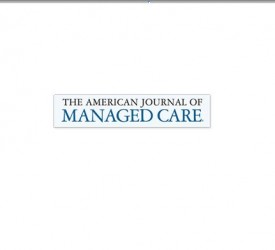You are looking at an archived version of our site. Please visit thepcc.org for a fresh, new experience!
You are here: Array » Impact of Medical Home ...
Impact of Medical Homes on Quality, Healthcare Utilization, and Costs

Abstract
Amidst dwindling economic resources and shrinking healthcare budgets, patient-centered medical homes (PCMHs) are gaining traction as an innovative approach for improving healthcare quality while reducing costs. With solid emphasis on preventive care and primary care, the PCMH model seeks to improve the continuum of patient care and drive efficiency by reconfiguring the primary care system. First introduced for pediatric patients in the 1960s,10 the PCMH concept now enjoys more support because of its broader potential in chronic disease management and for the enhancement of the vital triple outcomes: quality, cost, and the experiences of patients, their families, and providers.
The PCMH approach seeks to replace volume-based financial incentives for providers (eg, reimbursements tied to numbers of visits, laboratory tests, and procedures) with more coordinated care that targets better patient outcomes. Practices typically seek recognition from accredited entities such as the National Committee for Quality Assurance (NCQA),16 which requires the satisfaction of a number of well-defined “must-pass” requirements (Table 1). Two prominent practice models have emerged: consultative, in which practices engage external consultants to help them navigate the transformation period; and enhanced chronic care models, which pursue PCMH recognition by enhancing their core capabilities in caring for chronic illnesses.
In a study of 7 PCMH demonstrations, Fields et al showed annual reductions in hospitalizations (6% to 40%) and emergency department (ED) visits (7.3% to 29%), suggesting improvements in quality, and total annual savings ranging from $71 to $640 per patient.20 The practices did not focus on chronic care exclusively, and one, the Colorado Medical Homes for Children, reported total mean annual savings of $169 for all patients versus $530 for patients with chronic conditions.20 Transformation to PCMH status, however, could be a long and complicated process, as Nutting et al observed in a study of the first national PCMH demonstration (36 practices) that spanned from June 2006 to May 2008. Apart from payment reforms, PCMH transformation entails numerous adjustments such as learning new or redesigned service delivery models, changed perceptions about patient-provider relationships, and the need for extended periods of external guidance, among others.
Increasing evidence suggests that the PCMH model offers greater advantages to stakeholders than non-PCMH practices in treatment delivery, especially for chronic care. To date, however, much of the available data have been derived from pre-PCMH versus post-PCMH comparisons, which provide a limited picture of changes from baseline to full-fledged PCMH status. Only a few more than a third of the demonstration projects nationwide used non-PCMH controls in their comparisons, and in 7 studies evaluated by Fields et al, only 1 study used a control. A control population enhances the robustness and reliability of the results in comparison studies.26
The main objective of this study was to compare PCMH practices during their prerecognition phase with non-PCMH practices to assess important quality differences in healthcare delivery and costs that may already be evident during the transformative baseline period. This study, the first of its kind in a large commercially insured population, compared key elements of the vital triple outcomes for PCMH practices, with particular emphasis on quality, including appropriate prevention, screening, and care of common chronic conditions; laboratory evaluations; and cost improvements.
Full Resource/Source: The American Journal of Managed Care
Secondary menu
Copyright © 2024 Primary Care Collaborative



